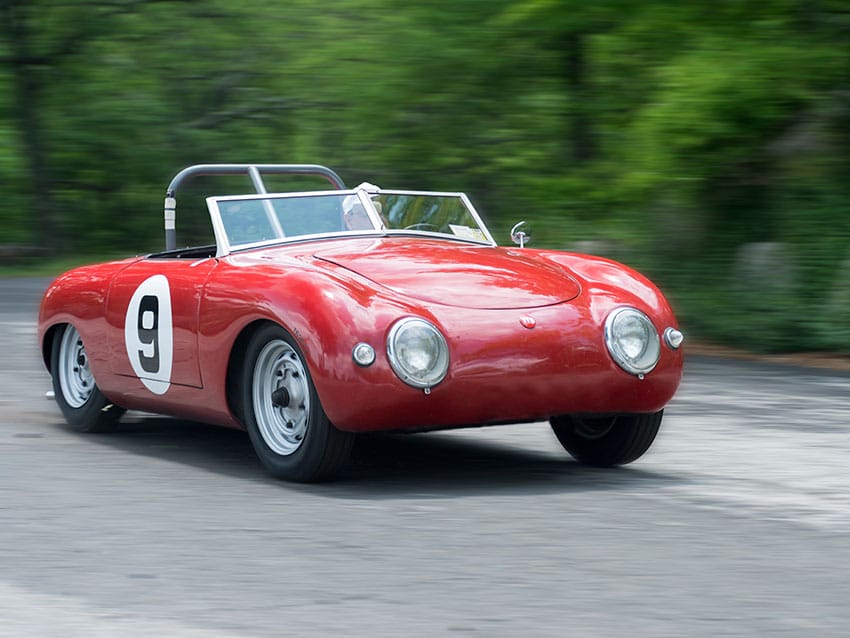As a schoolboy in Austria, Wolfgang Denzel gave fellow students advice on how to build racing bikes. Born into a bell foundry family in 1908, Denzel had built his own motorcycle by the time he was 22 and he went on to become a champion rider on BMWs. After the war, as a BMW shareholder, he played a role in keeping the company from falling into the hands of Mercedes-Benz and ultimately helped to create the BMW 700. This breathed new life back into BMW, allowing it to remain a company unto itself.
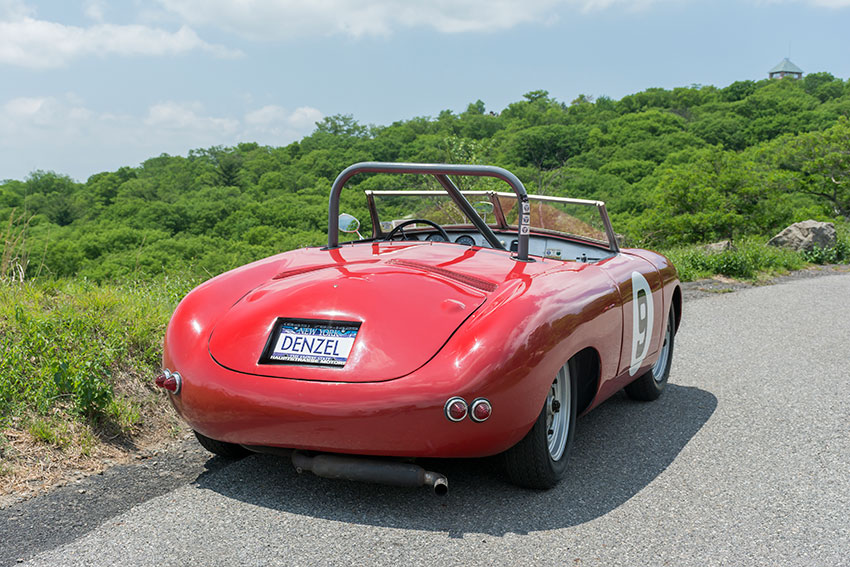
Always interested in machinery, Denzel took surplus VW Kübelwagens and made them roadworthy. He started thinking that there might be sports car bones lurking under the Kübelwagen’s skin. He created some prototypes in his shop in Vienna in 1948; these drew attention for their performance and lightweight construction. He combined wood and vinyl to fabricate the prototype body, mounted on the Kübelwagen’s chassis powered by an air-cooled 4-cylinder boxer motor. This prototype gave Wolfgang his first win, in the arduous Alpine Rally in 1949.
Similar to Porsche, Denzel used VW components, but he had his own ideas about the internals. The engine may have had a VW crankcase but everything inside – including the connecting rods, rocker arms, pushrods, intake manifolds pistons, and cylinders – was of Denzel design and manufacture, and all of it was very high quality.
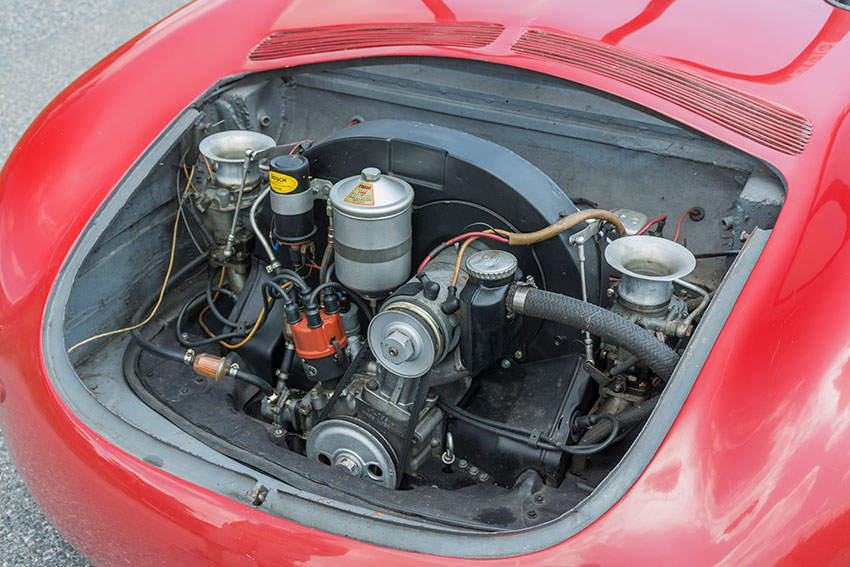
The Denzel engine utilized a fully counterbalanced crankshaft way ahead of Porsche. His engines also had full-flow oil filters; some even had aluminum connecting rods, something Porsche never offered on a 356 pushrod engine.
Around 1950 Wolfgang entered production with his car. Volkswagen was not happy with Denzel’s competition with Porsche and they refused to sell him complete components. As a result, Wolfgang designed his own chassis. But his production life was a short run; he assembled only 65 cars in total (though some sources suggest a number several times greater.) The small output challenged him to keep the cars affordable. By 1954, when the car featured here was manufactured, its price was the equivalent of a Jaguar XK-120. Compared to a Speedster at $2,999.00, the Denzel was a whopping $4,500.

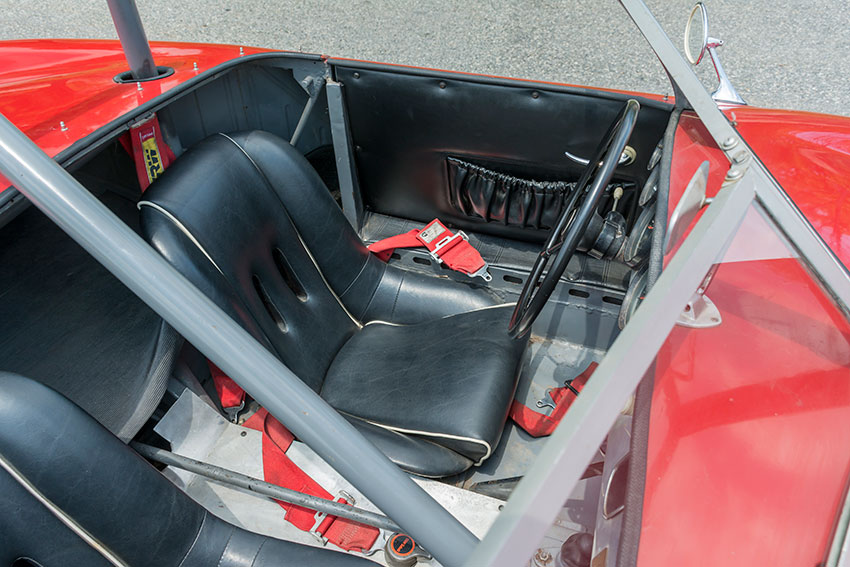
Constant improvements were an integral part of Wolfgang’s processes. At the beginning of the production run, the bodies were all steel; Over time, he began using aluminum for his doors, and the hood and trunk lids. Later, his panel beaters formed the whole body in the lighter alloy.
Denzel made a point of demonstrating how special and competitive his creation was. Wolfgang, behind the wheel along with co-driver Hubert Stroinigg, won the 1954 Coupe des Alpes Rally outright in one of his 1300cc cars. Only 37 of the 87 cars entered finished the event that, while it started and finished in Marseilles, France, typically traversed Alpine passes through Austria, Germany, Italy, and Switzerland. Even Sterling Moss had to settle for 10th place in a Sunbeam Alpine. Denzel went on to enter again in 1956 .
Road & Track had this to say about Wolfgang’s sports car: “The WD is a little jewel to the real enthusiast who wants to have a reasonable chance of success in 1300cc sports car racing. The car is extremely easy to drive and control, whether it be in competition or on city streets. The steering is exceptionally light, yet requires only 2.6 turns. Under stress there is a modest but not violent degree of oversteer. Summed up, the WD is one of the best all-round dual purpose machines we have ever found.”
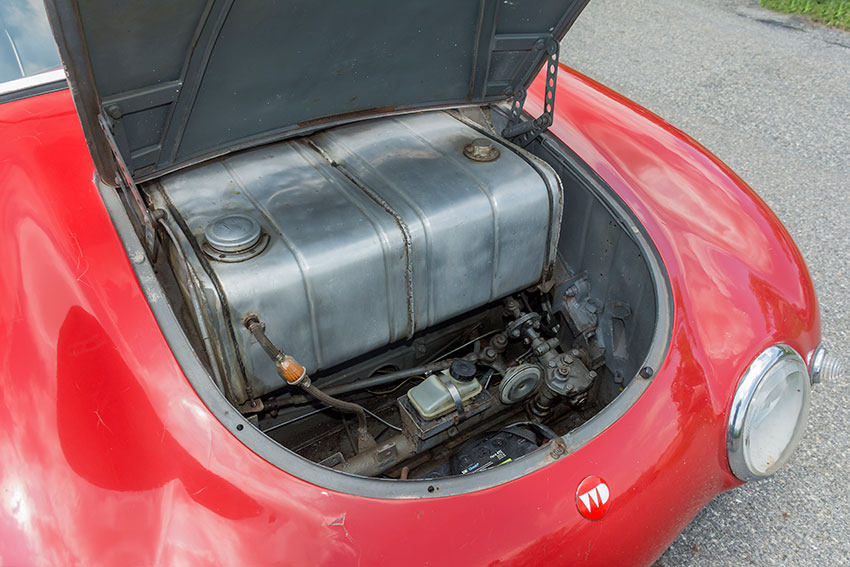
In 1958, Sports Car Illustrated put a Denzel through its paces, doing a few runs on the drag strip, with a top speed of 77.78mph. A XK120 ran the same day with a fast run of 77.00mph; a 1500 Speedster did the distance with a speed of 71.65mph.
The WD held its own against some heady competition. When the car ended up in the hands of a few California competition drivers, they went looking for windy roads. The consensus? The Denzel is more Spyder than Speedster. It has better weight distribution like the former, with less of a tendency for the back-end to take over in a slide. They all agreed the Denzel had slight oversteer up to the point of a slide, which allowed you the quickest way around a corner, changing instantly to nearly perfect neutral steering when a full drift or slide begins. Sitting more forward in the car also gives one a better view for placing a fender around hay bales. The drivers were all looking forward to seeing the WD battle it out on racetracks with Alfas and Lotus.
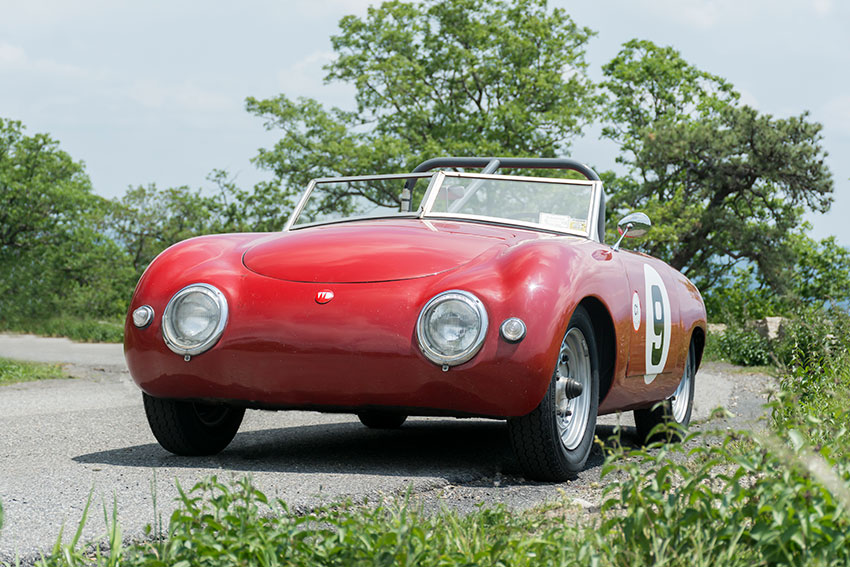
This Denzel, DK19, was bought new by Richard Toland. He had been a racer for some time, competing in MG PAs, TDs, and Porsche 356s. Otto Linton, a Porsche, Mercedes, and BMW importer had brought DK 19 into the United States. Litton was hoping to become a Denzel dealer, but in the end he sold only three.
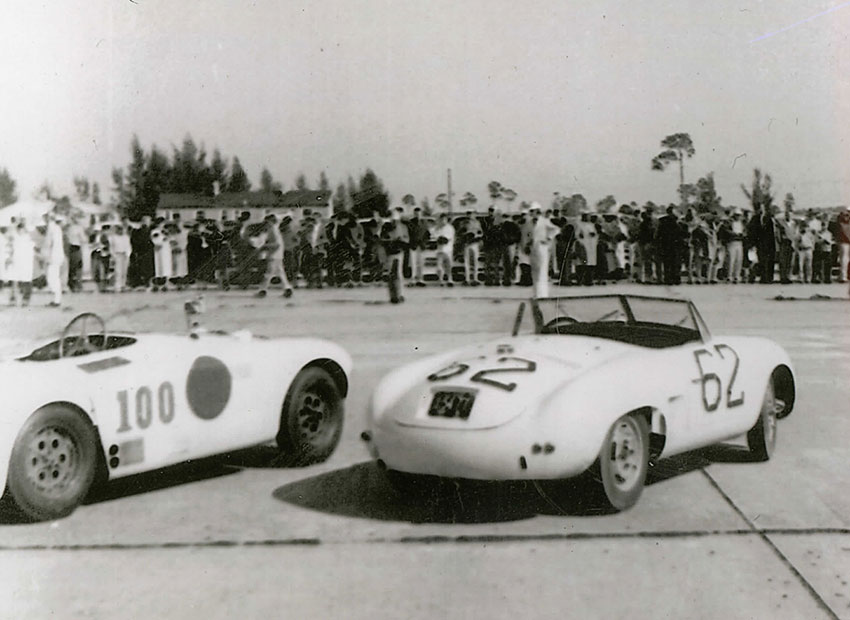
In Toland’s first outing with the Denzel, he drove from Ohio to Florida (to break it in) and then he competed in the 1954 Sebring 12-hour endurance race. He finished a very respectable 12th overall. He then drove the car home again. Toland, having no experience with the Denzel engine, had Linton swap it out immediately for something the driver knew intimately: a Porsche Super engine. The Denzel engine went into the 1953 Porsche coupe that had donated its engine to the racing cause and the combination ran beautifully for years after the change.
After Sebring, Toland and the Denzel ran at Cumberland, Beverly, Brynfan, Tyddn, and Allentown during the 1954 season. Year 1955 was another full calendar, starting again with Sebring and ending at the SCCA nationals on the Fairchild Air Force base in Hagerstown. Toland drove one more race in 1956 at Cumberland before switching to a 356 Porsche.
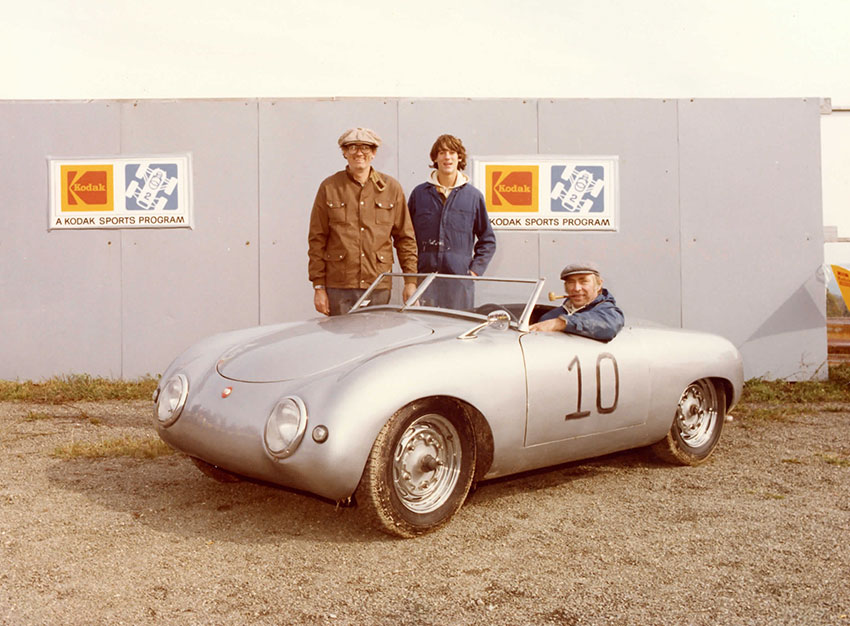
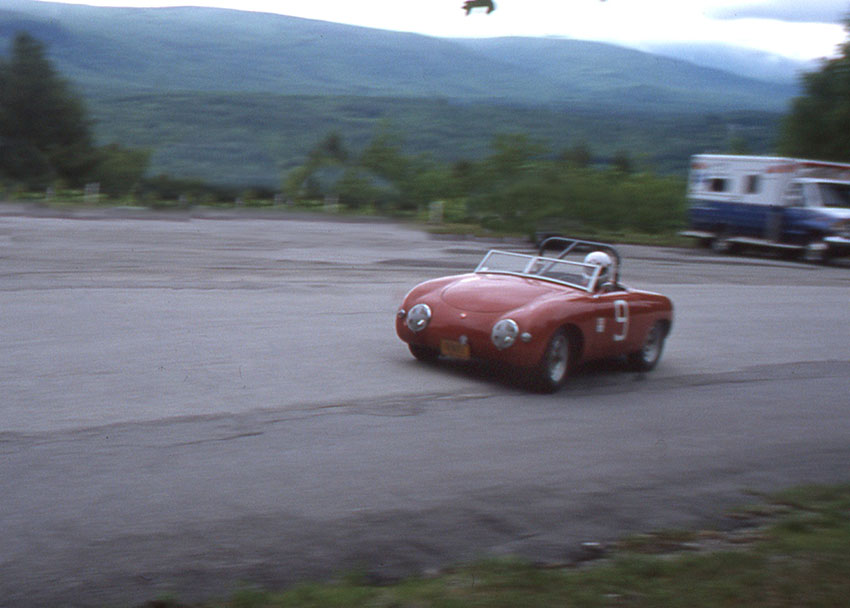
Dk19 changed hands and went into hiding for a number of years until Howarth “Howie” Gilmore acquired it from Joe Ryba on Long Island. Gilmore was a VW and Porsche fan and he had recently joined the VSCCA. Howie wanted to race, but in the 70’s the club didn’t want to admit 356’s; in their minds they were not rare and exotic enough.
But a Denzel certainly was.
It became the first Porsche-powered car allowed to race with the VSCCA. Gilmore jumped in with both feet, competing in the Denzel at Lime Rock, Watkins Glen, Pittsburgh, and Mt. Equinox. He did this for about ten years; then a chance for a later model Denzel became available, #DK160. Gilmore sold DK19 to a fellow racer’s son Bill Haupt. Following in Gilmore’s and his own father’s tire tracks, Bill raced the Denzel all over the East Coast.
A memorable race at Bridgehampton before its demise saw Haupt in the Denzel and two other Porsche powered cars, a Speedster and a Devin, battling it out tooth and nail in the rain and sun in an epic race of Porsche-powered machines.
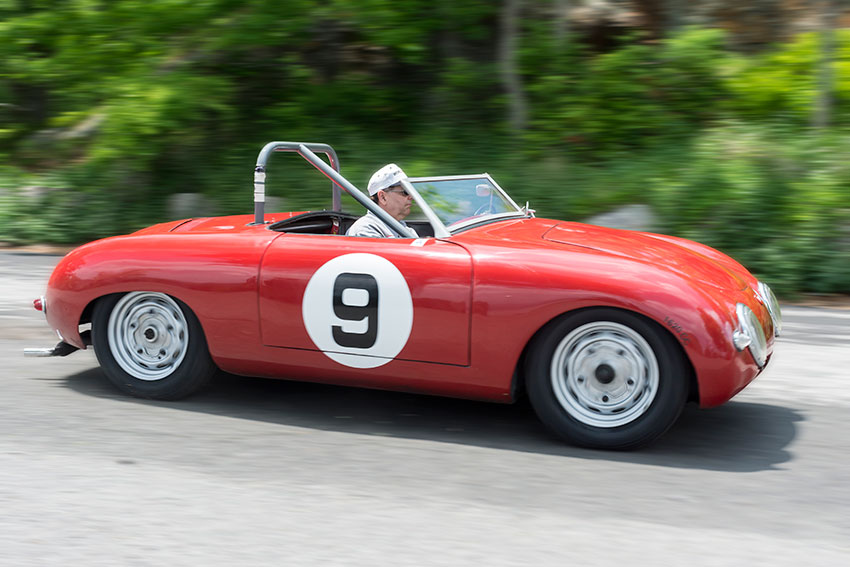
Having owned a Speedster, Haupt was amazed at the difference between the two machines. “You could hang the rear end out farther, easier then you could with the Speedster. You could just drive it faster. It was,” he added, “like comparing a ’73 Porsche 911 T to a 911 Carrera RS!” This all could be credited to the Denzel’s lower weight and stiffer racecar-style tube frame chassis. It was just a bit more cutting edge.
The little car built by the son of a bell manufacturer is still competitive today after all these years, ringing out its distinctive heritage, looks, and performance clear and strong.
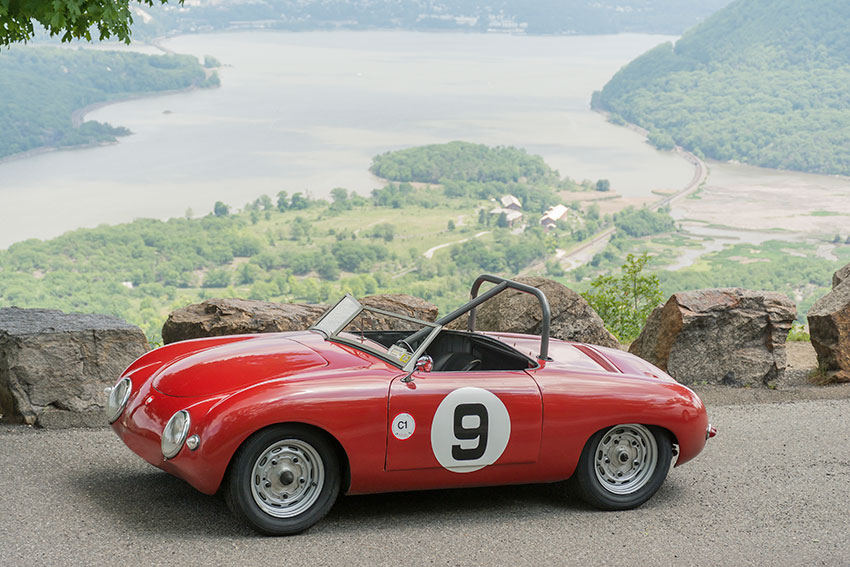
Editor’s Note: Wolfgang Denzel’s name carries on in nearly a dozen sales and service facilities throughout Austria, offering new and used models from Abarth to Volvo, and servicing exotics from Ferrari to McLaren. Porsche is not among the 18 marques Wolfgang Denzel Auto AG handles.

